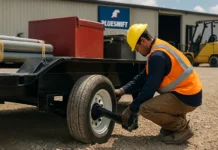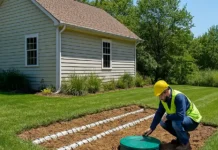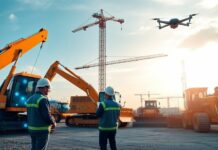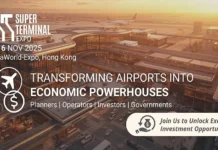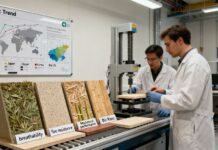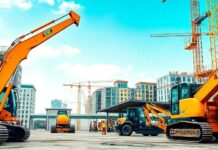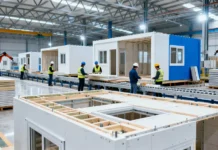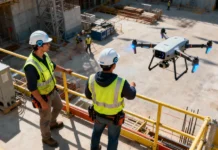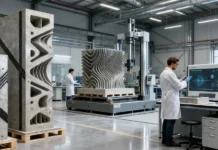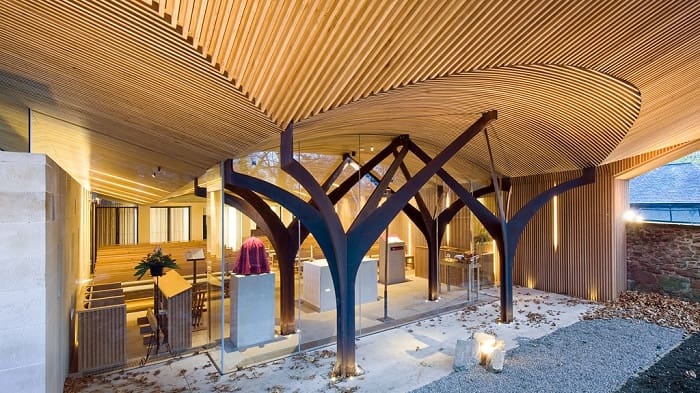A UK-Singapore joint venture is set to introduce engineered timber, or Laminated Veneer Lumber (LVL), for housing projects in India and other South Asian countries in an ambitious bid to substitute wood for conventional building materials like steel and concrete and help scale up low-carbon construction.
A team of designers and engineers working with locally-sourced timber will be located in Chennai in the coming months, said Kevin Hill, Managing Director of timber design and construction company Venturer Pte Ltd, a partnership with Singapore’s Woh Hup Construction Group.
The Chennai Engineered Timber prefabrication hub is in the formation process, said Hill, a founder of Singapore-based Double Helix Tracking Technologies, which was awarded British Chamber of Commerce Entrepreneur of the Year in 2009 for their approach of using scientific methods to secure timber supply chains, and promote the legal trade in timber.
India, with high target sets to reduce CO2 emission at COP26, is now allowing use of timber as elements of structure for public buildings and habitat projects, he said, pointing out that it was previously banned.
“One can envisage India will steadily adopt more prescriptive approaches that empower local engineers to expand theoretical understanding,” Hill told PTI.
“The world is finally accepting that timber construction can be the single most important way to cut emissions for the built environment,” said Hill, a UK Chartered Builder and an industry professional who has resided in Singapore for more than 25 years.
He pointed out that “Wood for good” is no longer an idle wish.
“It is a vital move for the planet if we are going to seriously cut emissions and attain net zero by 2030. We know that the built environment is responsible for 40 per cent of global emissions. This is confirmed by the World Green Building Council,” he said.
The council is a non-profit organisation working in the building and construction industry with offices in London and Ontario as well as member councils in over 70 countries.
Emissions come from the energy consumed within conventional buildings for heating, cooling and lighting, also known as operational emissions, Hill said, adding that the harder challenge is to eliminate emissions associated with the extraction, processing and manufacturing of building products or embodied emissions.
He suggests scaling up low-carbon construction through the use of engineered timber which would result in substituting half of the conventional building material and reduce global emissions by 9 per cent to meet 2030 targets for keeping global warming below 1.5 degrees Celsius.
Substituting wood for conventional building materials, like steel and concrete, reduces construction phase emissions by 69 per cent.
Hill sees a huge market for timber housing in India, Nepal and Bhutan, backed by the availability of good grade timber, responsibly-sourced from the region and not imported from Europe.
He cited the World Bank estimates that 1.2 billion people live in substandard housing that fails to meet the most basic needs.
Nearly 900 million people live in slums and 90 per cent of all adults have no access to housing finance.
By 2030, it is estimated 300 million new homes, and millions more support structures like schools, clinics and work places will be required.
The past two decades have witnessed innovation in digital construction solutions, design for manufacturer and assembly, sustainability initiatives, timber engineering, construction adhesives, processing and manufacturing technology. Together, these have made timber highly relevant for today’s sophisticated construction markets, said Hill.
He said an increasing trend of planting and replanting of trees globally, assures that timber supply will always be steady.
Venturer has already been involved in major building projects in the region, most notably for resorts in the Maldives, where timber was sourced and supplied from Europe.
But Hill sees that so much more can be achieved in India and elsewhere by using locally and regionally available timber.



